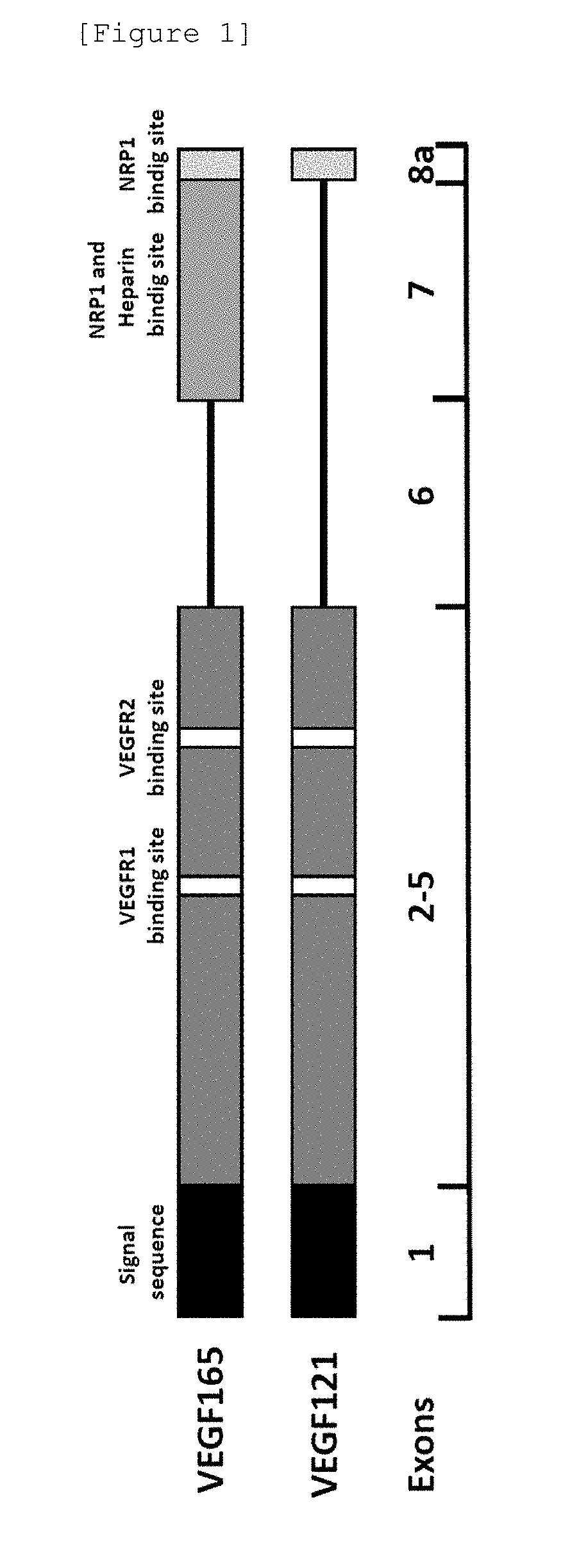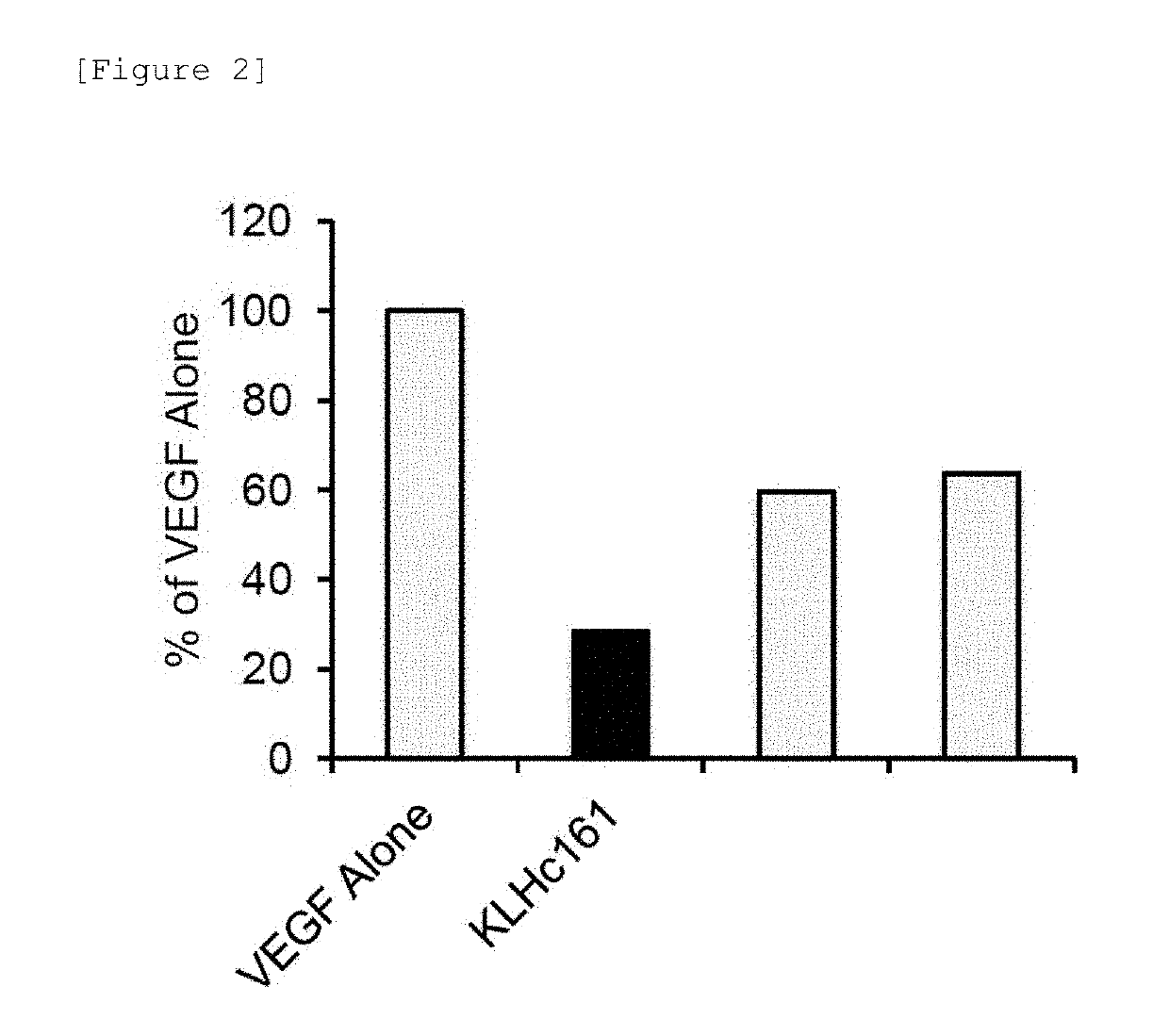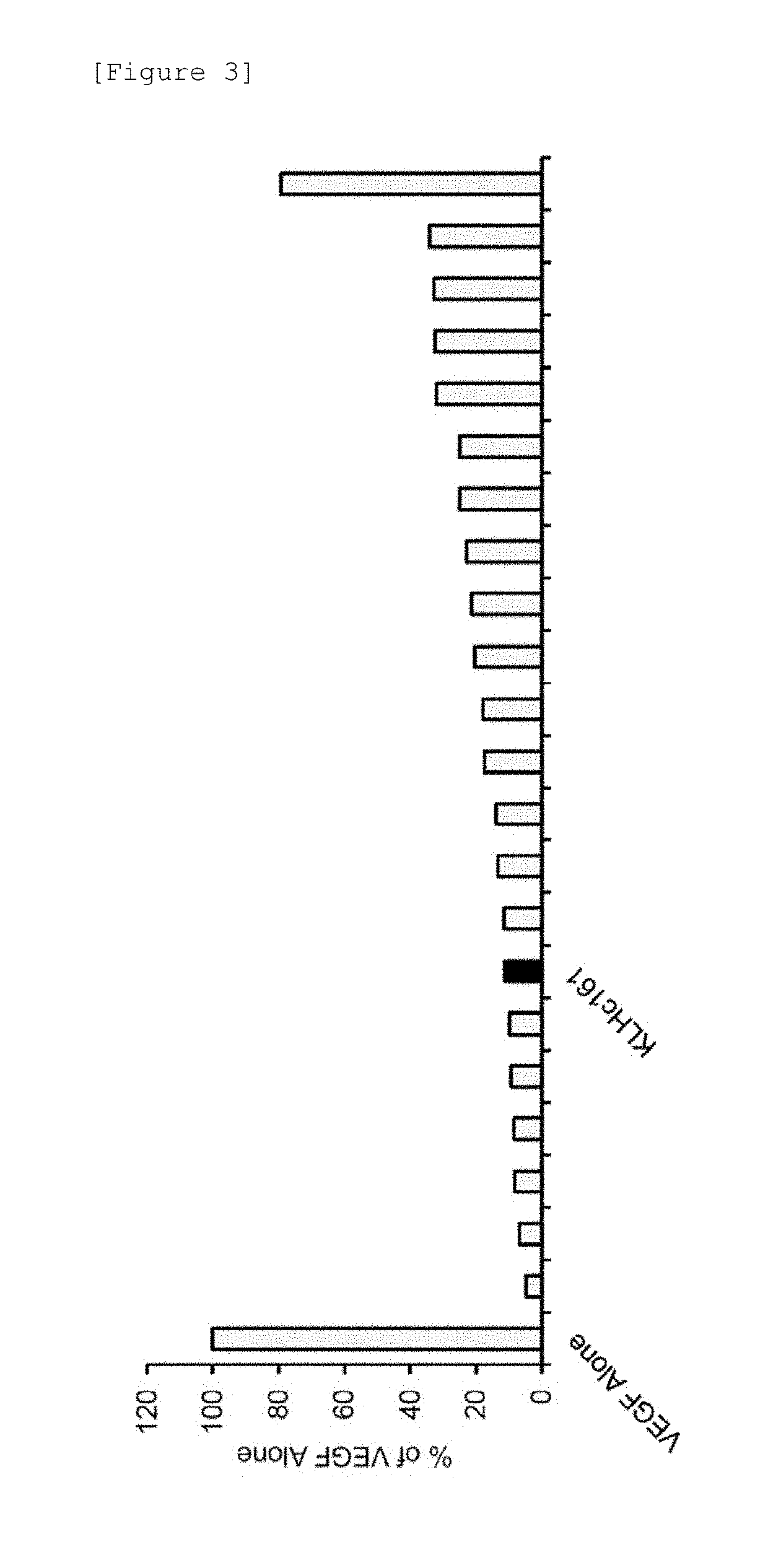Antibody inhibiting binding of VEGF to nrp1
a technology of vegf and binding to nrp1, which is applied in the field of antibodies, can solve the problems of defective blood vessel remodeling and branching, and the binding of bevacizumab is not inhibited, and achieves the effect of inhibiting binding
- Summary
- Abstract
- Description
- Claims
- Application Information
AI Technical Summary
Benefits of technology
Problems solved by technology
Method used
Image
Examples
example 1
Preparation of Monoclonal Antibody
(1) Preparation of Antigen
[0139]Human recombinant VEGF165 (hereafter, may also be referred to as “VEGF”, “rhVEGF165” or “rhVEGF”) expressed by CHO cells (PROSPEC) was used as an antigen. For the purpose of suppressing the effect of VEGF on mice, an antigen bound to KLH (Keyhole Limpet Hemocyanin) was prepared. In this case, VEGF and KLH were mixed so that the molar ratio of VEGF to KLH was 4:1 in PBS (−) (0.01 M sodium-phosphate buffer, 0.138 M NaCl, 0.0027 M KCl, pH 7.4), and then 1% glutaraldehyde was added, and then the mixture was allowed to react at room temperature for 1 hour, thereby cross-linking KLH and rhVEGF165. The thus prepared protein may also be referred to as “KLH-VEGF” in the followings.
(2) Immunization
[0140]rhVEGF or KLH-VEGF and Freund's complete adjuvant were mixed in equal amounts, and then the mixture was administered intraperitoneally to BALB / c mice in an amount of 100 μl (about 40 μg / mouse). After about 3 weeks, rhVEGF and Fr...
example 2
Evaluation of Monoclonal Antibody
[0144](1) Selection of Monoclonal Antibody Reactive to rhVEGF121
[0145]With the use of rhVEGF (hereafter, may also be referred to as “rhVEGF121”) (HUMANZYME) expressed by human 293 cells, monoclonal antibodies produced by the thus obtained hybridoma cells were evaluated by the method described in Example 1 (4). The binding domain of VEGF165 to NRP1 is known to be a Heparin binding domain corresponding to exon 7 and the C-terminal region corresponding to exon 8a. VEGF121 lacks the Heparin binding domain that is an NRP1 binding domain. A schematic diagram produced on the basis of the primary sequence is shown in FIG. 1. VEGF121 has VEGFR1 and VEGFR2 binding domains but lacks the Heparin binding domain that is an NRP1 binding domain and thus an antibody that binds to VEGF121 binds to exon 1, 2, 3, 4, 5 or 8a of VEGF165. In order to obtain an antibody that binds to a region that is not a NRP1 binding domain, but inhibits binding of NRP1 and VEGF, clones ...
example 3
Inhibiting Effect of Monoclonal Antibody on Cell Proliferation
[0158]Clone No. KLHc161 monoclonal antibody was selected from the obtained anti-VEGF antibodies, and then the antibody was analyzed if it inhibited the action of VEGF on normal human umbilical vein-derived endothelial cells (hereafter, may also be referred to as “HUVEC”). HUVEC (BD) was thawed and cultured using attached growth medium to prepare HUVEC in logarithmic growth phase. HUVEC was used in the test to such an extent that the number of passages did not exceed 8. Medium 200 (Invitrogen) containing 1% Fetal Bovine Serum and 1% penicillin-streptomycin (Invitrogen) was used, 5000 cells each were seeded on a 12-well plate, and Recombinant Human Vascular Endothelial Growth Factor, CHO (Prospec) (hereafter, may also be referred to as “rhVEGF”) was added at a concentration of 50 ng / mL, thereby continuing culture. Upon evaluation, simultaneously with the initiation of culture, a cell group to which rhVEGF had been added at ...
PUM
| Property | Measurement | Unit |
|---|---|---|
| average molecular weight | aaaaa | aaaaa |
| wavelength | aaaaa | aaaaa |
| pH | aaaaa | aaaaa |
Abstract
Description
Claims
Application Information
 Login to View More
Login to View More - R&D
- Intellectual Property
- Life Sciences
- Materials
- Tech Scout
- Unparalleled Data Quality
- Higher Quality Content
- 60% Fewer Hallucinations
Browse by: Latest US Patents, China's latest patents, Technical Efficacy Thesaurus, Application Domain, Technology Topic, Popular Technical Reports.
© 2025 PatSnap. All rights reserved.Legal|Privacy policy|Modern Slavery Act Transparency Statement|Sitemap|About US| Contact US: help@patsnap.com



